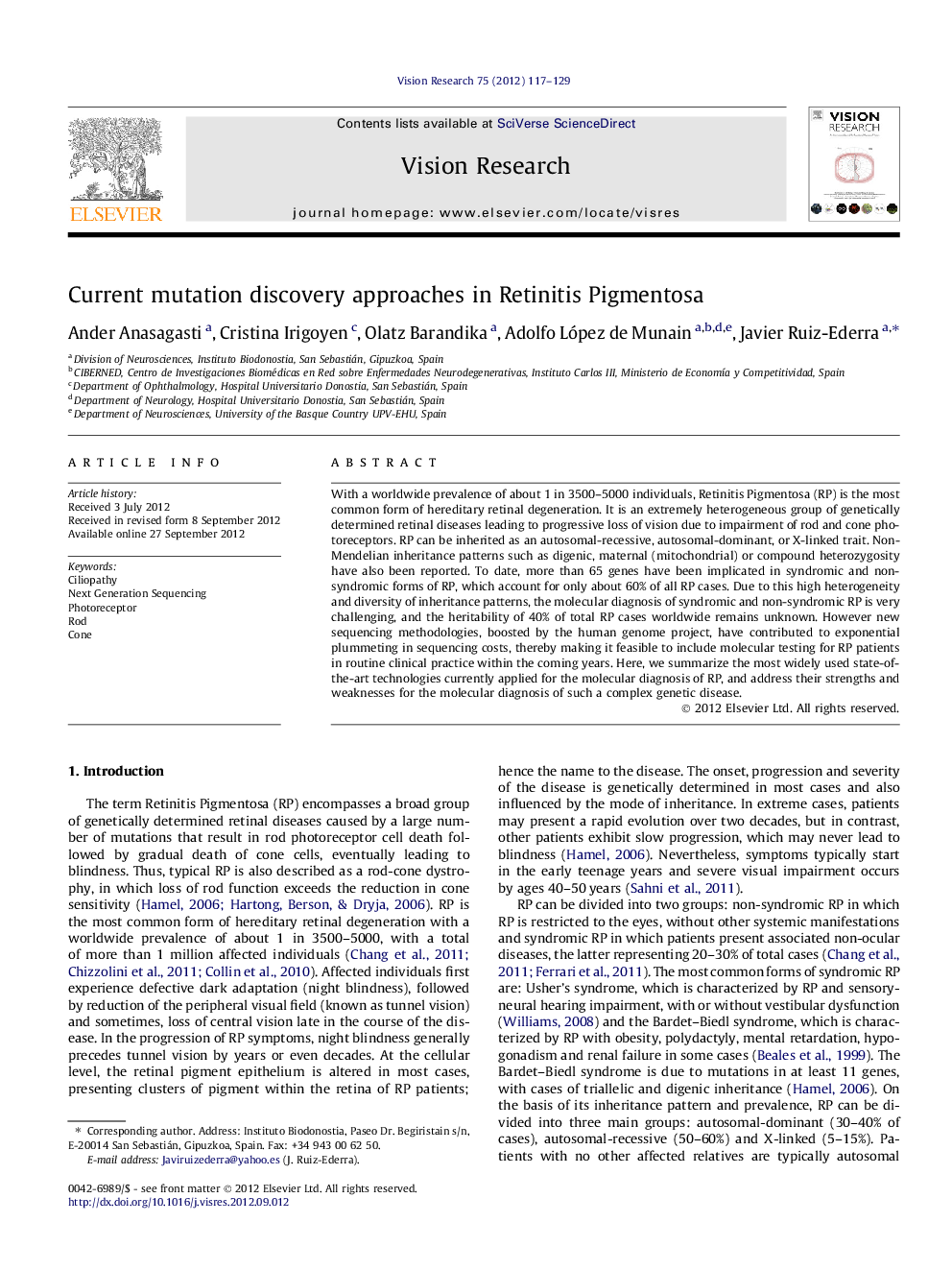| Article ID | Journal | Published Year | Pages | File Type |
|---|---|---|---|---|
| 4033878 | Vision Research | 2012 | 13 Pages |
With a worldwide prevalence of about 1 in 3500–5000 individuals, Retinitis Pigmentosa (RP) is the most common form of hereditary retinal degeneration. It is an extremely heterogeneous group of genetically determined retinal diseases leading to progressive loss of vision due to impairment of rod and cone photoreceptors. RP can be inherited as an autosomal-recessive, autosomal-dominant, or X-linked trait. Non-Mendelian inheritance patterns such as digenic, maternal (mitochondrial) or compound heterozygosity have also been reported. To date, more than 65 genes have been implicated in syndromic and non-syndromic forms of RP, which account for only about 60% of all RP cases. Due to this high heterogeneity and diversity of inheritance patterns, the molecular diagnosis of syndromic and non-syndromic RP is very challenging, and the heritability of 40% of total RP cases worldwide remains unknown. However new sequencing methodologies, boosted by the human genome project, have contributed to exponential plummeting in sequencing costs, thereby making it feasible to include molecular testing for RP patients in routine clinical practice within the coming years. Here, we summarize the most widely used state-of-the-art technologies currently applied for the molecular diagnosis of RP, and address their strengths and weaknesses for the molecular diagnosis of such a complex genetic disease.
► We summarize the most widely used, technologies for the molecular diagnosis of RP. ► We report their main features, advantages and disadvantages. ► We assess their capabilities and limitations to accomplish the molecular diagnosis of RP. ► We discuss future directions in NGS technology and in molecular diagnosis of RP.
